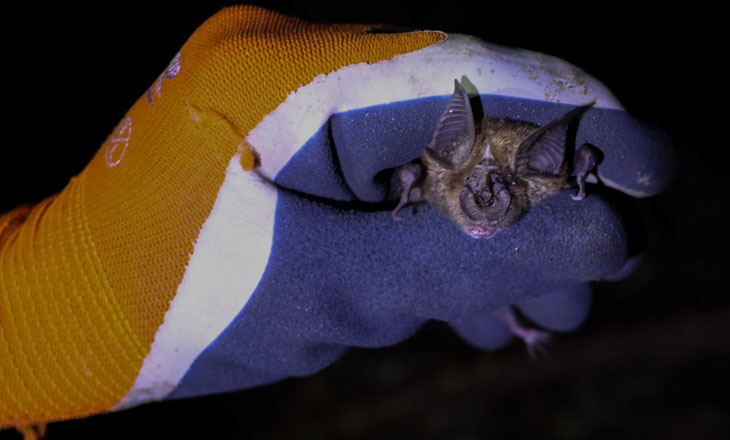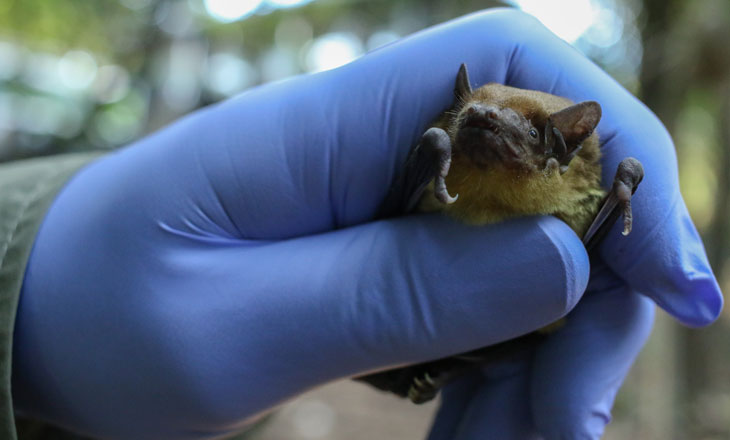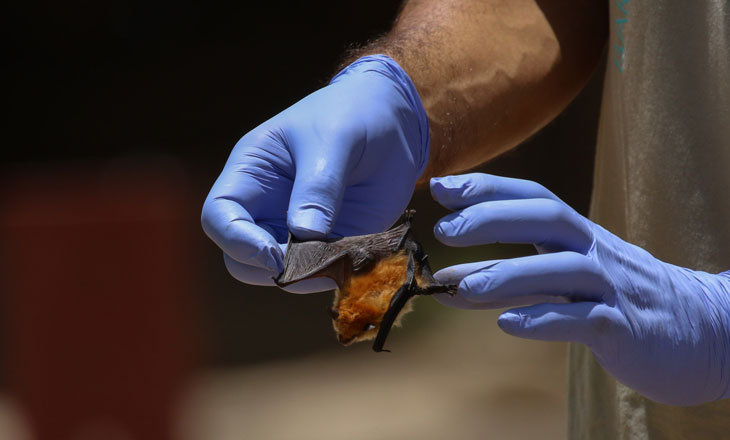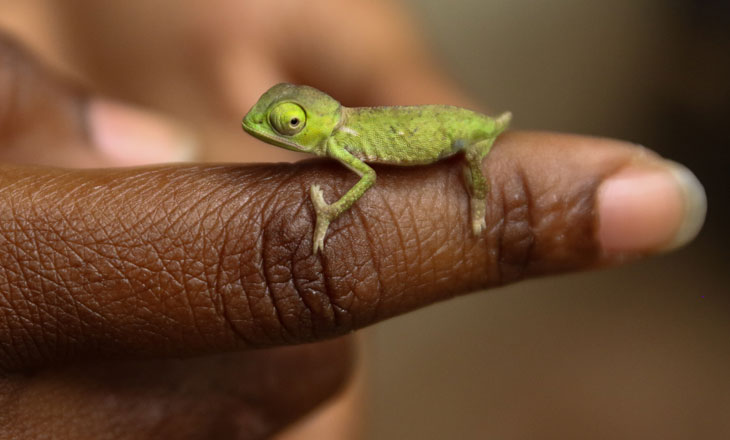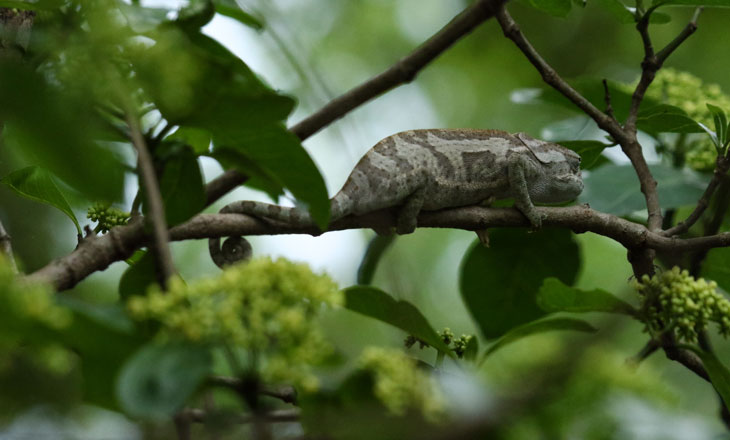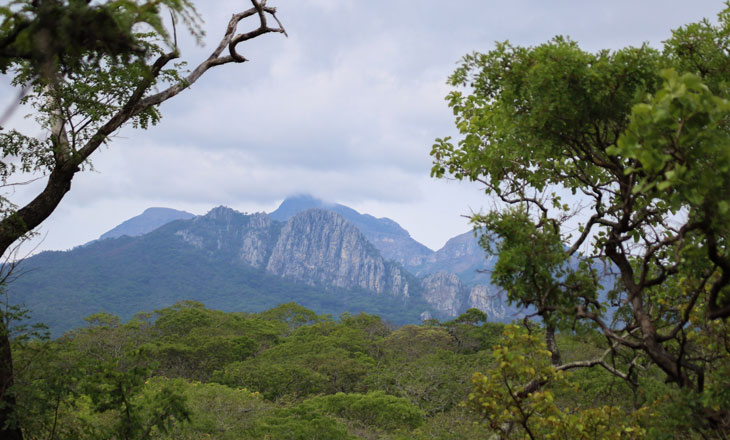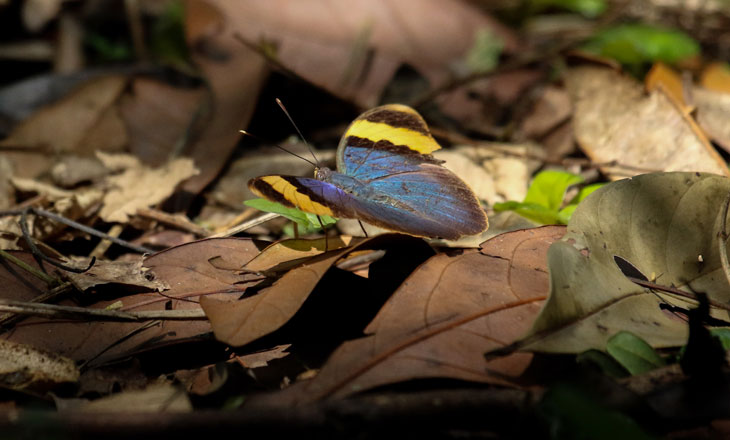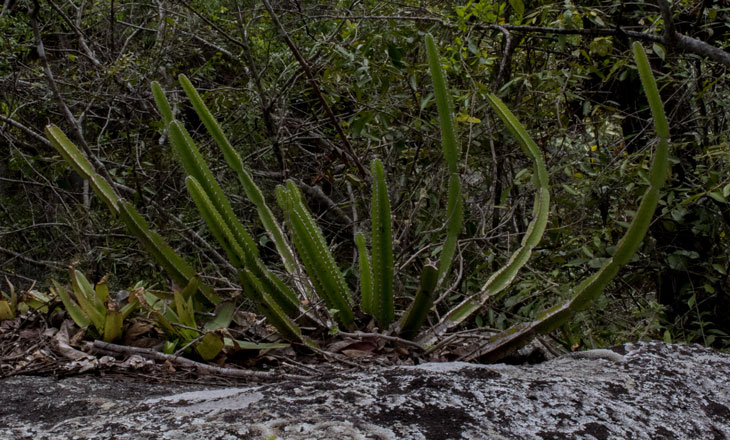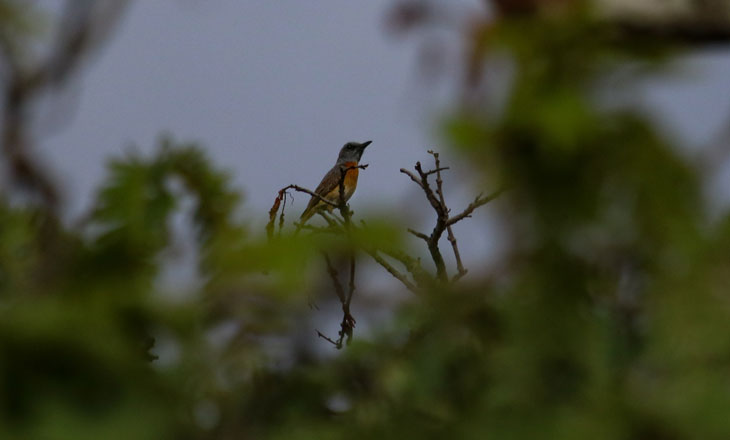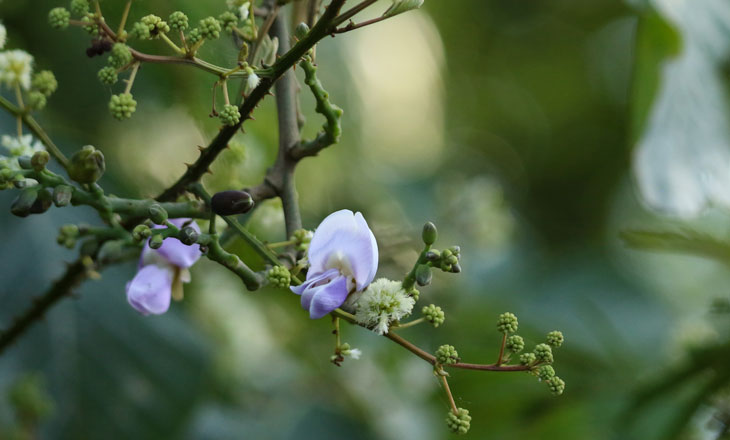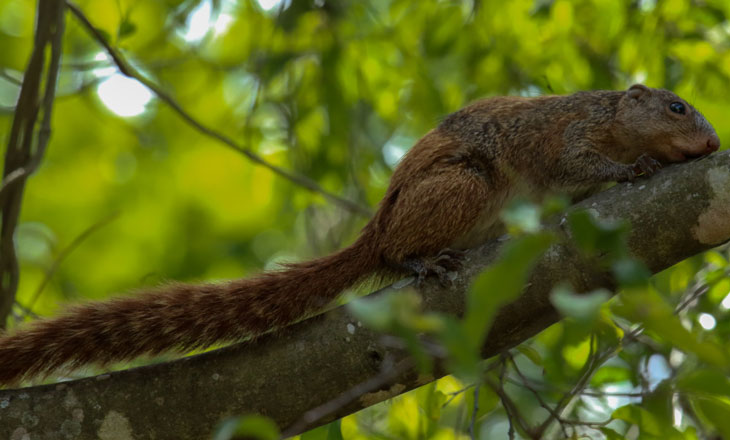231 bird and 42 mammal species, including a bat new to Mozambique, were among the species found over a two-week period
Published at 16/09/2019
Survey in Chimanimani reveals more than 1,000 animal and plant species
More than 1,000 animal and plant species have been discovered by researchers in a section of the Chimanimani Conservation Area, including a number of species new to Mozambique and several species potentially new to science.
The findings followed a two week biodiversity survey in late 2018 in the understudied Chimanimani Conservation Area in Manica Province and underscore the importance of protecting this rich, biodiverse landscape from threats including mining and logging.
As well as the birds and mammals, the team (which consisted of visiting specialists and students of the Gorongosa BioEd MSc programme) found 42 species of mammal, 231 species of bird, 22 species of amphibian, 45 species of reptile, over 450 insect and 176 plant species. One bat species is believed to be new to Mozambique and one frog, one lizard, and a bush-cricket are believed to be new to science. Several species of animals were recorded for the first time in Mozambique.
Within Chimanimani the unique combination of different altitudes, soils, rain and fire has resulted in a high level of endemism, especially in flora. This Conservation Area as a whole has a critical role to play in the functioning of ecosystems over a wide area but faces land use conversion pressures in its buffer zone. As a result, stewardship efforts are focused on preventing encroachment and safeguarding the integrity of the site.
“The findings demonstrate how important Chimanimani is to biodiversity in Mozambique and to global conservation science. It is critical that threats to the landscape, including illegal mining, as well as poaching, logging and damaging agricultural practices are tackled so we can protect this unique landscape for generations to come”, said Lionel Massicane, Warden of the Chimanimani National Reserve.
An area within the Moribane Forest Reserve in the buffer zone of the Chimanimani National Reserve was found to be home to a number of unique species, a finding which further reinforces the importance of protecting the remaining lowland evergreen forest in the country.
The Reserve plays a vital role in the culture of local communities, its mountains having been inhabited for centuries and containing important historical sites including Stone Age rock paintings and ruins dating back to the Great Zimbabwe era of the fourteenth and fifteenth centuries. Together with the Chimanimani National Park in Zimbabwe the Reserve constitutes a transboundary protected area covering around 1,000 km².
The biodiversity research was carried out under the auspices of the Chimanimani Biodiversity Census Project supported by Administração Nacional das Áreas de Conservação (ANAC), Fundo Nacional de Desenvolvimento Sustentavel (FNDS), Fauna & Flora International (FFI), Gorongosa Restoration Project and MICAIA Foundation, with funding from the World Bank’s MozBio1 programme through The Foundation for the Conservation of Biodiversity (BIOFUND).
Notes to editors:
Administração Nacional das Áreas de Conservação (ANAC)
Established in 2011, the National Administration for the Conservation Areas (ANAC) is a state institution responsible for the conservation of biodiversity and the sustainable development of the country’s ecotourism. Its main activities are the planning, coordination and execution of activities in the conservation areas, in partnership with local organisations and communities. The conservation areas, administered by ANAC, represent around 25% of the national territory, including 7 National Parks and 7 National Reserves, and 70 game hunting areas divided in 20 official game reserves, 9 hunting blocks, 13 community projects and 31 game farms.
For press enquiries contact: Elias Matsinhe (elias.matsinhe@anac.gov.mz)
Chimanimani National Reserve (CNR)
The Reserve, managed under ANAC, was created in light of Decree 34/2003 (19 August), with the main objective of safeguarding the protection of the biodiversity-rich ecosystem, floral endemism and conservation importance of the Chimanimani massif. Chimanimani, including the headwaters of various rivers, Mount Binga (the highest point in the country) and the historical-cultural heritage of the region, has a total area of 2368 km². This comprises of a core protection area of 683 km² and a buffer zone of 1,685 km². This is a transboundary conservation area (Mozambique – Zimbabwe), located in central Mozambique, Manica Province, Sussundenga District, covering the Rotanda, Mouha and Dombe Administrative Posts.
Fundo Nacional de Desenvolvimento Sustentável (FNDS)
FNDS is a public legal entity with legal personality and capacity, with administrative, financial and patrimonial autonomy, under the supervision of the Minister responsible for Land, Environment and Rural Development. FNDS arises from the global need for the adoption of sustainable development models that provide for the emergence of multilateral financing funds in compliance with the new UN-approved Sustainable Development (SDG) targets, with emphasis on climate change. The objective of FNDS is to promote and finance programmes and projects that guarantee sustainable, harmonious and inclusive development, with particular emphasis on rural areas.
For press enquiries contact: Leonardo Chauque (leonardo.chauque@fnds.gov.mz)
The Foundation for the Conservation of Biodiversity (BIOFUND)
BIOFUND is a private financial institution with the aim of financing the conservation of biodiversity in Mozambique. With a public utility status its mission is to support the conservation of aquatic and terrestrial biodiversity and the sustainable use of natural resources, including the consolidation of the national system of Conservation Areas.
For press enquiries contact: Joaquim Adriano Govene (jgovene@biofund.org.mz)
Gorongosa Restoration Project
Gorongosa National Park is a successful wildlife restoration story; a long-term public-private partnership between the Government of Mozambique and the US non-profit organisation the Carr Foundation. The conservation model balances the needs of wildlife and people by working in four core areas: wildlife and landscape protection, community support, scientific research and sustainable tourism.
For press enquiries contact: Vasco Galante (vasco@gorongosa.net)
MICAIA Foundation
MICAIA Foundation is a Mozambican NGO founded in 2009 and working primarily in Manica Province. MICAIA follows a long-term approach to community development and livelihoods resilience, recognising that the pathway away from poverty and vulnerability is a long and difficult journey. The Foundation’s work centres on two main themes: sustainable management of natural resources, and diversification of the local economy. Two further themes, food security and active citizenship, are increasingly integrated and cross-cutting in all work.
For press enquiries contact: Milagre Nuvunga (milagre@micaia.org)
Fauna & Flora International (FFI)
Established in 1903, FFI was the world’s first international wildlife conservation organisation. FFI’s mission is to conserve threatened species and ecosystems worldwide, choosing solutions that are sustainable, based on sound science, and which take into account human needs. FFI’s focus is on protecting biodiversity, which underpins healthy ecosystems and is critical for the life support systems that humans and all other species rely on. FFI is active in more than 40 countries across Africa, the Americas, Eurasia and Asia-Pacific and supports over 140 conservation projects and 320 partners around the world.
For press enquiries contact: Nathan Williams (nathan.williams@fauna-flora.org

